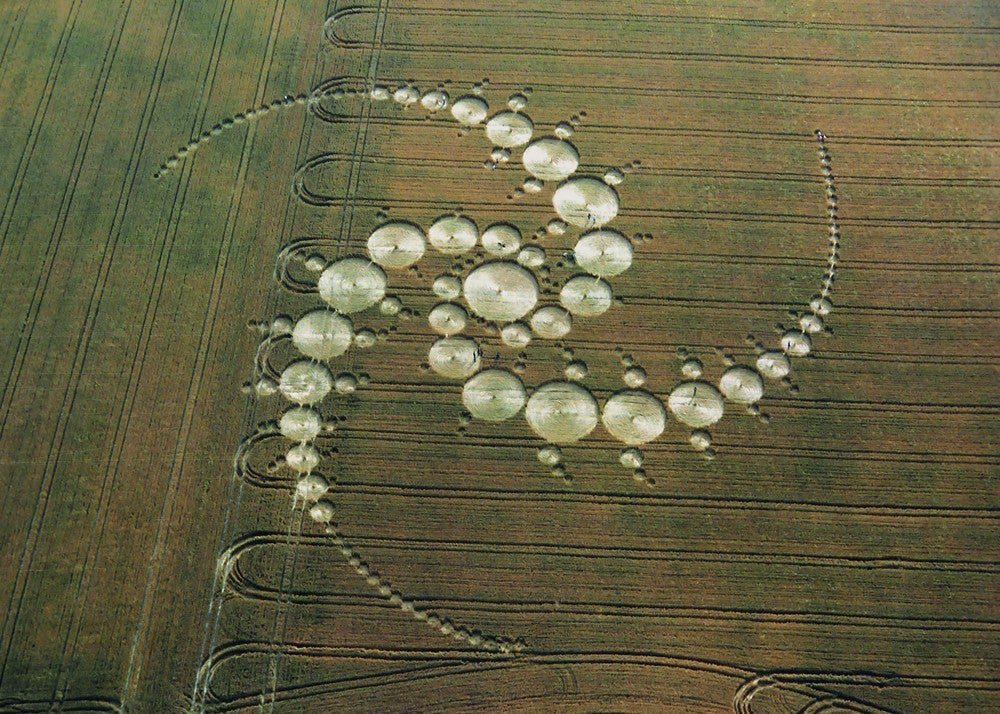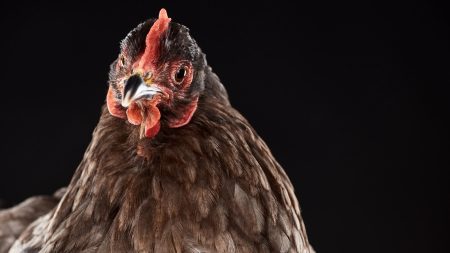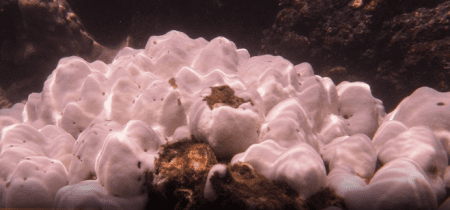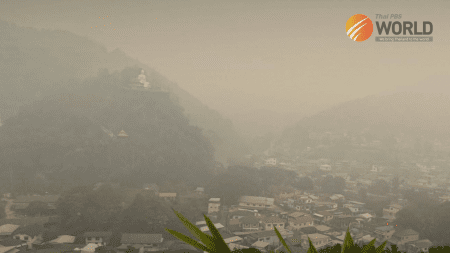In the collective modern imagination, crop circles are usually attributed to either aliens or a vast human conspiracy; possibly both. Some circle-watchers believe the designs are landing strips, maybe, or some kind of communiqué from outer space. Others argue crop circles are the result of secret government tests, or perhaps secret codes meant to convey information to satellites and aerial drones.
For all the talk about who makes them, few people discuss how. Do people (or little green men) stomp around willy-nilly until the stalks fall down? Or is something decidedly more high-tech going on? We talked to a circlemaker and a materials physicist to get some answers.
It’s a fair scientific question, according to Richard Taylor, a professor of physics and art at the University of Oregon. He believes circlemakers, as they’re known, are using some advanced technology, from microwaves to GPS, to make their increasingly complicated designs.
“Although it’s an odd topic, it actually is quite rigorous science — here’s a mystery, here is a potential hypothesis that would solve this,” he said. “It’s a perfect example of seeing something out there in the real world and using science to explain it. It’s just a little bit more exotic.”
Roughly 100 crop circles appear in the UK every summer, according to circlemakers. Taylor has a few ideas about how they’re done, which are outlined in an article in the research magazine Physics World. We talked to Taylor about his research and about his new ideas. An edited transcript of our conversation is below.
Click here to see a gallery of fractal-shaped crop circles._
Just to be sure, PopSci asked a UK-based circlemaker to share his techniques. He won’t give everything away, but he says microwaves are not involved. (Read more from him at the bottom.)
Richard Taylor on Crop Circles
PopSci: What piqued your interest in crop circles?
Richard Taylor: My research background is with human vision, and how we can develop artificial retinas. As part of those studies, we try to understand how people view natural patterns, so we try and explore how people view artworks.
I grew up in England in the 1980s, when these crop circles were starting to get a lot more intricate in their design. Even at that stage, I began to realize the myth, which was that a few people were stumbling home and sort of fooling around in a field, that was clearly no longer an appropriate description of what was going on. Some of these patterns were incredibly intricate, with thousands of component parts.
The thing that really triggered it for me was that nobody, from the art world or the science world, was exploring how these people were able to produce these intricate patterns overnight. The old myth, that people were stomping on crops, was getting increasingly ridiculous, from my point of view. It seemed to be a great art-science crossover question, of what is going on?
PS: Why should people care about how these are made? Other than to prove or disprove aliens, of course.
RT: These crops, after they are turned into artwork, are harvested. So whatever is going on with those crops, they are getting in to our food supply. So people ought to know about it if there is some interesting technology involved.
Some people think it is aliens, you’ve got conspiracy theories about the goverment using satellites, and the third is you have human hoaxes. I thought, well let’s take the evidence that people are using to say it’s aliens or a government conspiracy. Why do they say that? They cite publications from the 1990s, where biophysicists went in and did research on the crops that appeared in the patterns. And they found evidence for microwave radiation.
The UFOlogists said those microwaves must be coming from alien spaceships, and the conspiracy theorists said, the CIA is beaming down these microwaves from their satellites. And I said, hey, there’s another explanation here — maybe the artists are using microwaves.
PS: How would microwaves flatten crops?
RT: A typical crop has these sort of joints in the stalks. If you expose those to the microwaves, the stalks expand. It’s called superheating. It’s a bit like what goes on in your microwave oven — as the stalk heats up, they expand. The stalks fall over in a horizontal position. When you switch it off, switch off the microwave, the stalks stay in that position. It would make more sense to radiate with microwaves than to go physically stomping these crops. And one interesting phenomenon is the stalks are never broken, they’re just bent.
It’s all a consequence of the development of modern technology. It’s only fairly recently that we’ve been able to have portable magnetrons that can run off a 12-volt battery. Before, you would have to take a generator with you to a crop field.
I’m not saying this is actually what is going on; my article is one explanation. This seems to fit all the facts, and you don’t need aliens. Note: See below for a response from a circlemaker.
PS: OK, so say you have a spare field and a magnetron — how would you make a crop circle?
RT: I would go on a computer, go into a design program, and design the pattern prior. Then I would convert those measurements on the screen into GPS coordinates, and then I would go out with my little GPS watch or whatever, and at each point, I would be able to stake out the pattern in the field. If you are using straight lines between points, I would use a laser to figure out a straight line. That’s how I would design it.
Then the physical imprinting … one possibility is to use microwaves to superheat the stalks and cause them to fall down. Before they cool down and anchor into place, that’s when you would sculpt your pattern — when they are still flexible, when you could weave the patterns. I’m not saying that’s what they are doing, but I am saying that’s perhaps what they should be doing.
PS: How many people would it take?
RT: The designs that are coming out now are so beautiful, I think it’s not just one lone person working in a field. Even if the technology improves, it will still be a collaboration between a number of people.
PS: Are they getting bigger or more intricate? What’s the crop circle trend?
RT: Some of the patterns are quite incredible. Some of them are 115 meters (377 feet) in diameter. If you were physically imprinting it, that’s quite a lot of effort. It’s not just going and stomping down a line, because within that 115 meters, there might be like 190 little circles of different sizes. And they’re beautiful to look at as well.
So this sort of myth that it’s a couple people hoaxing — that’s certainly the way that it started, but that’s not what is going on now.
PS: Has anyone accused you of ruining the mystery, like spoiling a magic trick? Isn’t the secrecy of the technique part of the mystique?
RT: My briefest claim to fame is that I analyzed the artworks of Jackson Pollock. Some in the art crowd said ‘maybe you shouldn’t be using science to explain away art.’ But what happened there was, by identifying the types of patterns in Pollock’s work, it made his work more wonderful, because it emphasized his talent. We found fractals in his canvases. Previously, people had assumed these were random splatters of nonsense and had no meaning to them, but we identified these natural patterns in there. He had managed to distill the essence of nature on his canvas in a direct way. That was a great example of scientific knowledge added to the value of the artwork, and I’m hoping the same thing will happen here.
If we can identify the tools that these artists are using, it’s not going to trivialize it. It’s going to demonstrate how talented these artists are.
My motivation, is to say to the world, that these patterns are spectacular, and the people who are making them have talent, and that talent should be celebrated. I think the answers will add to the celebration of these amazing thing.
Response from a Crop Circle Artist
Note: We also talked to circlemaker John Lundberg, who told us the following via email:
In the field, we use very low tech equipment, surveyor’s tapes for the measurements and a device called a ‘stalk stomper’ to flatten the crop. The stalk stomper is a 4-foot-long piece of wood with two holes drilled at each end. A piece of rope (approximately 8 feet long) is looped through the holes at each end and tied. To use the stalk stomper, you place your foot in the middle of the plank of wood and hold the rope in your hands like horse reins, then you step forward with the foot that is on the plank to flatten the crop.
I can assure you we’ve never superheated any crop stalks. If such things are allegedly found in crop circles, they are either present already and unrelated to the creation of the crop circle, or more likely it’s just bad data based on bogus science.
The only technology I use is computer software to design the crop circle construction diagrams that we take into the field with us. I use the type of software an architect would use to design the floor-plan of a building.
I create a series of construction diagrams that lay out the construction sequence and all the geometry and measurements we need to create the crop circle. Most crop circle designs are symmetrical, as it enables you to efficiently create a very complex looking design with a relatively simple set of instructions that repeat. Asymmetrical designs are far more complex and time-consuming to create, which is why you don’t really see many asymmetrical crop circles.
See our gallery of incredible crop circles here.
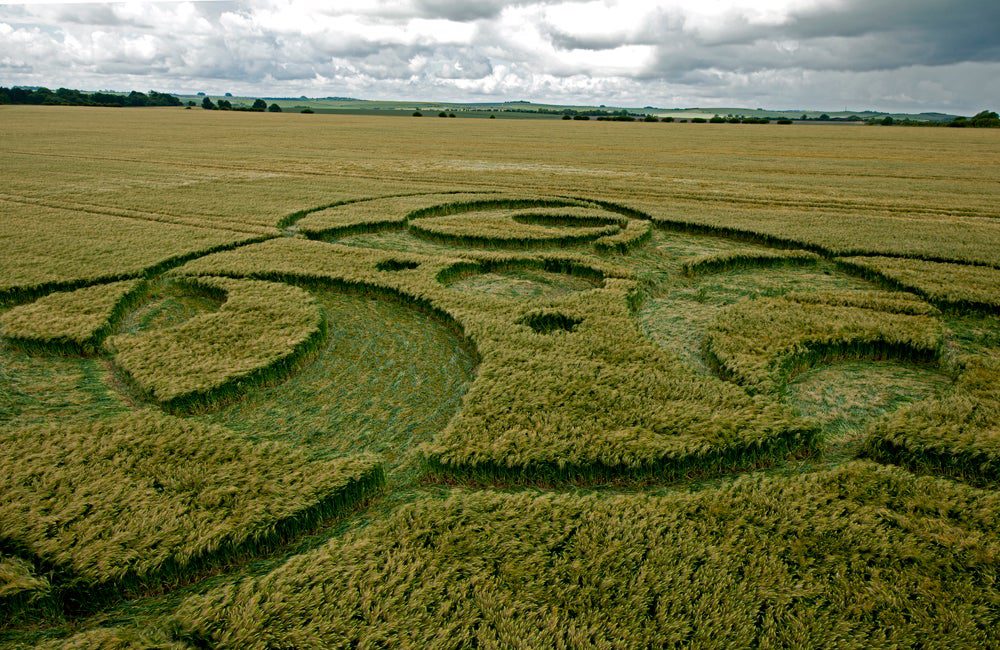
Kingstone Coombes

Ogbourne, St. Andrew, Wiltshire
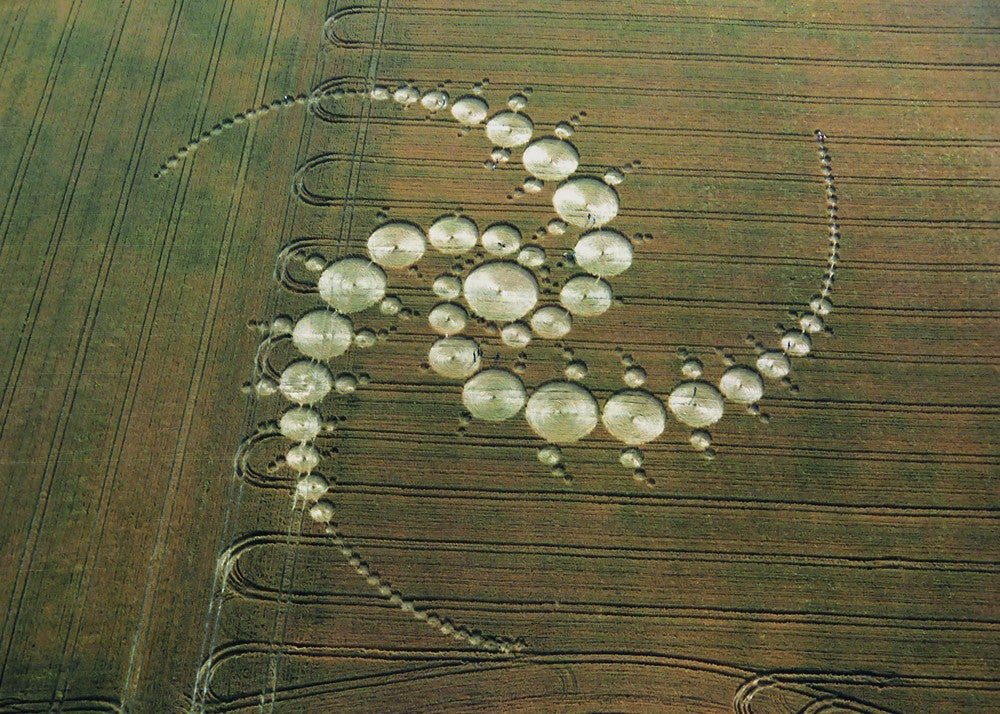
A Triple Julia Set
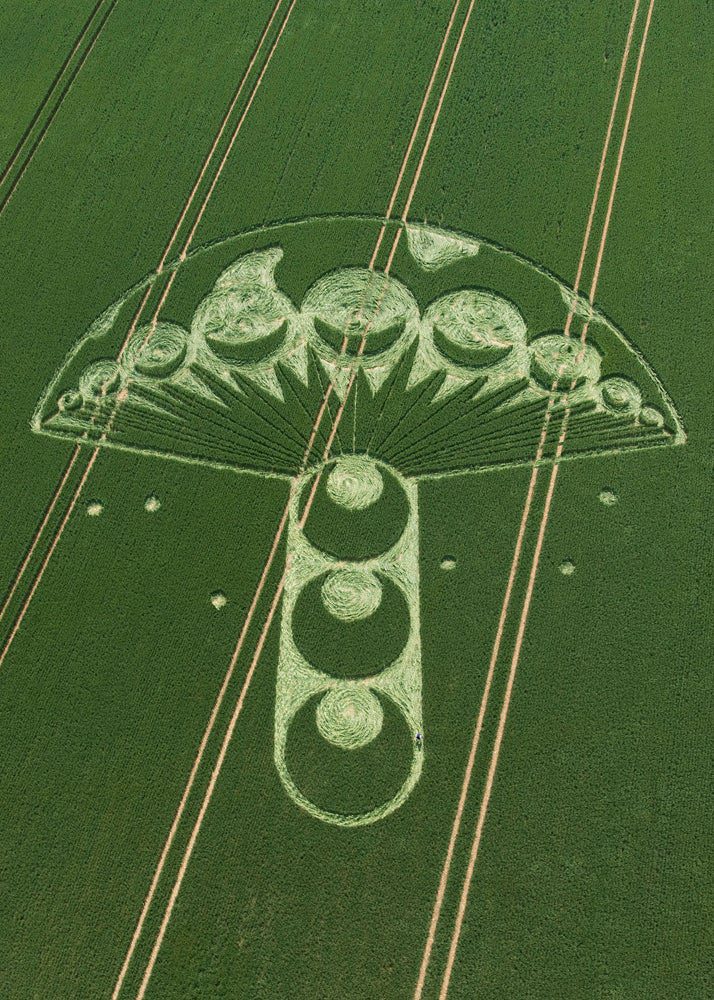
An Alien Ship or a Psychedelic Mushroom?
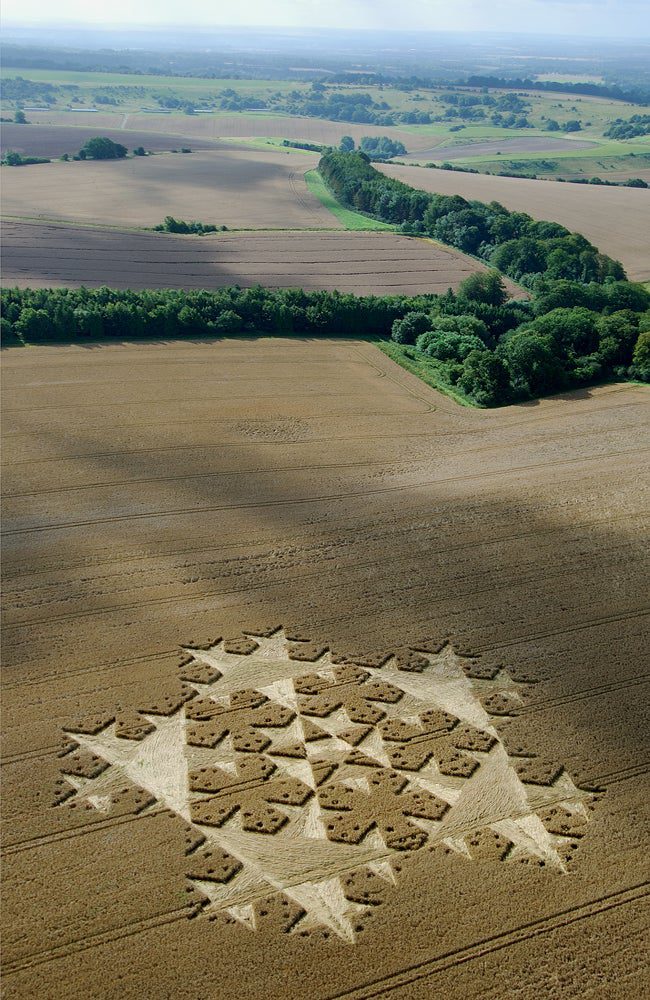
Star-Shaped Fractals
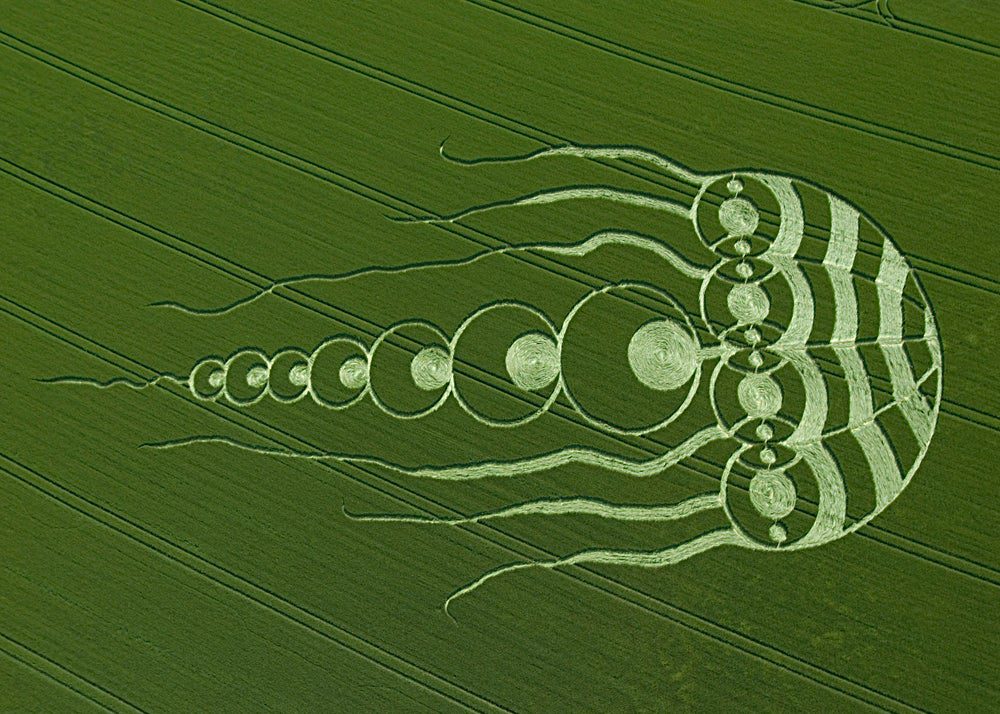
The Famous Jellyfish





